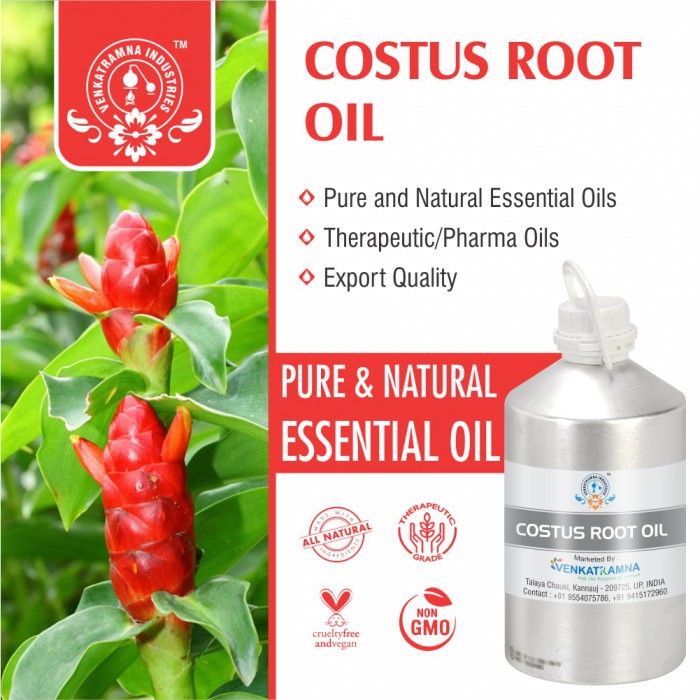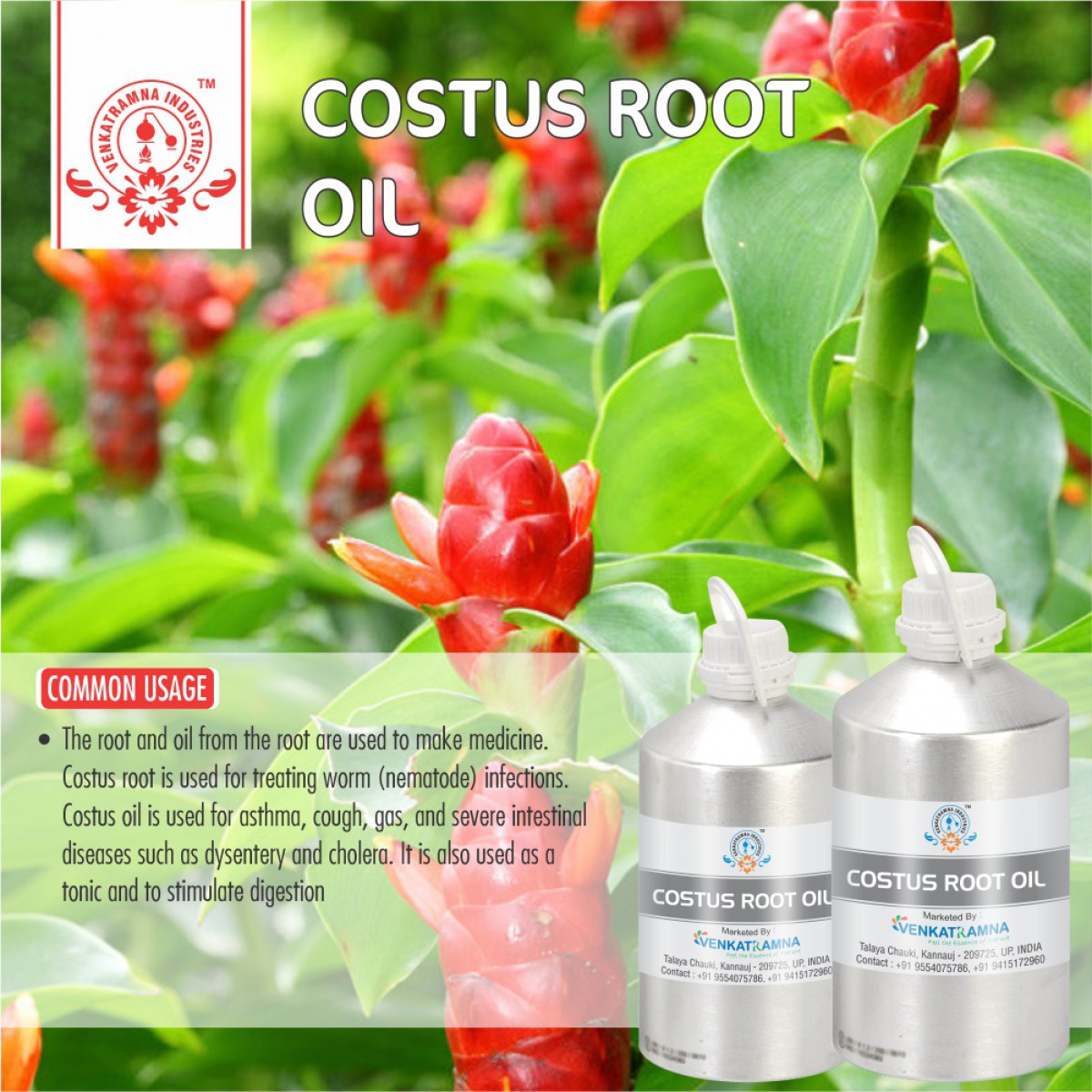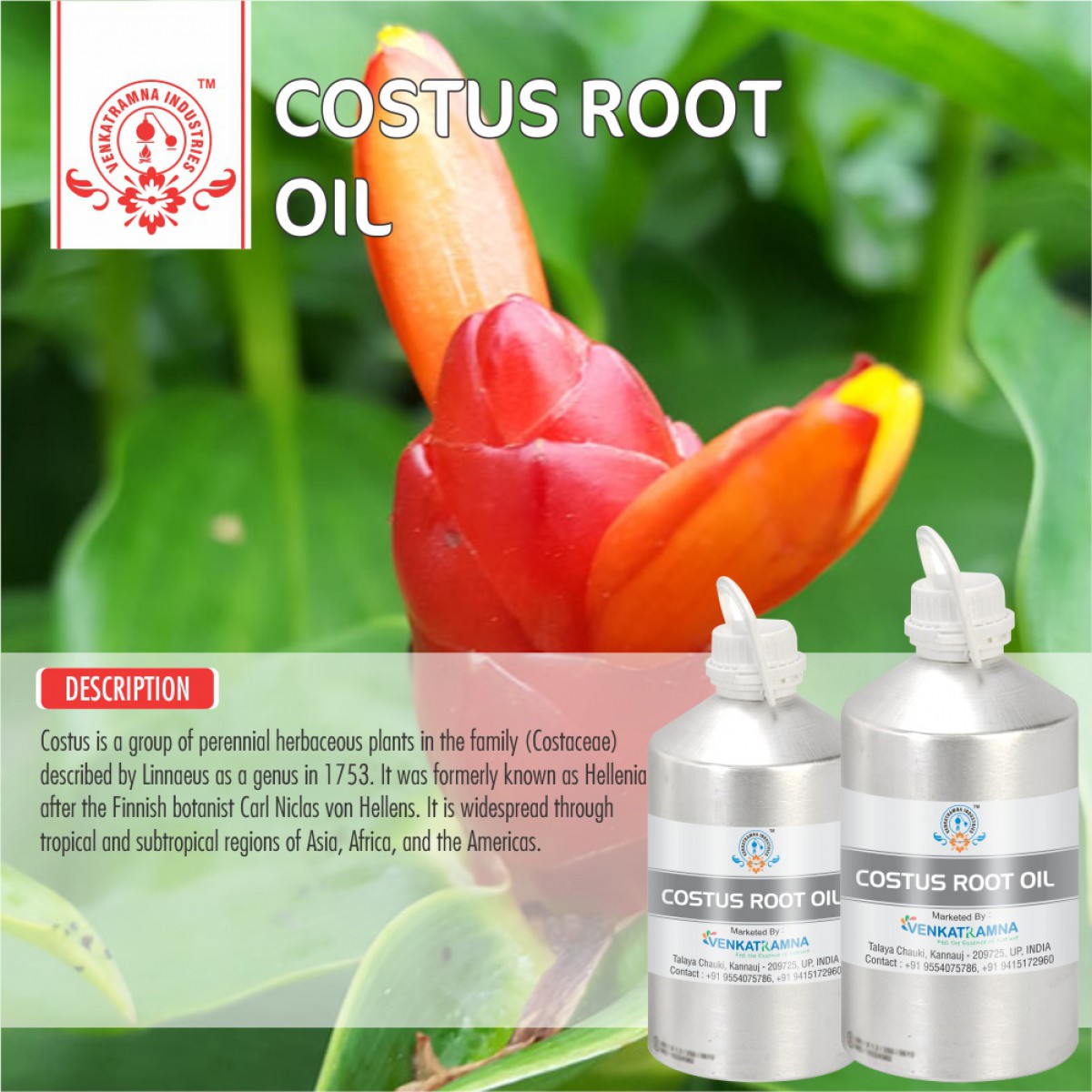Botanical Name: Saussurea costus Common name: costus, kuth, or putchuk Read More
|
Botanical
Name: |
Saussurea costus |
|
Common name: |
costus, kuth, or putchuk |
|
Plant family: |
Asteraceae |
|
Genus: |
Saussurea |
|
Appearance/Color: |
Pale yellow-brownish yellow |
|
Odor: |
Soft, warm, delicate, musky, woody |
|
Blends With: |
Sandalwood, patchouli, vetiver, violet and rose |
|
Origin: |
India |
|
Source: |
Roots (Dried) |
|
Method
of Extraction: |
Steam Distillation |
Saussurea costus (Falc.) Lipschitz, syn Saussurea lappa C.B. Clarke, one of the best-known
species within this genus, is commonly known as costus. Due to the remarkable
biological activity of S. costus and its
constituents it will have an appropriate place in various systems of medicines
all over the globe. It grows on the moist slopes of the Himalayas at
altitudes of 8000-12000 feet in Kashmir, Himachal Pradesh, Lahul Spiti, etc. It
both grows wild and is cultivated. The roots have a long history of medicinal
and aesthetic use in Tibet, India and other mountain regions.It was a prized
item of commerce from the earliest times as the roots were reputed not only to
have great curative properties but also wonderful aromatic qualities much
prized in perfume creations of the ancient world. It not only was appreciated
as an oil but as a prime ingredient in incense. In Ayurveda the name Kushta
refers to an ancient Vedic plant god mentioned in the Atharvaveda as a remedy
for takman, the archetypal disease of excess or jvara (fever). In ancient India
Kushta was a divine plant derived from heavenly sources, growing high in the
Himalayas, considered to be the brother of the divine Soma. In Ayurveda Kushta
is a rasayana for Vata, helping to normalize and strengthen digestion, cleanse
the body of toxic accumulations, enhance fertility, and reduce pain.
The genus Saussurea DC. of the family Asteraceae comprises about 300 species in the world of which about 61 species exist in India. Saussurea costus has become an important drug in the international market as well as Indian systems of medicine. It is used either as a single drug or in combination with other drugs. In India, this is endemic in the sub alpine region of Jammu and Kashmir, Himachal Pradesh and Uttarakhand from altitudes of 3200–3800 m.
DISCLAIMER
The complete range of conditions
or methods of use are beyond our control therefore we do not assume any
responsibility and expressly disclaim any liability for any use of this
product. Information contained herein is believed to be true and accurate however,
all statements or suggestions are made without warranty, expressed or implied,
regarding accuracy of the information, the hazards connected with the use of
the material or the results to be obtained from the use thereof. Compliance
with all applicable federal, state, and local laws and local regulations
remains the responsibility of the user.
The FDA has not evaluated the
statements on this website. No claims are made by Venkatramna Industries as to
the medicinal value of any products from vriaroma.com or by us. The information
presented here is for educating our customers about the traditional uses of
essential oils and is not intended to diagnose, treat, cure, or prevent any
disease. You are responsible for understanding the safe application of these products.
If you have any questions, please call or email us for further information.
As per NAHA guidelines, New Directions Aromatics
(NDA) does not recommend the ingestion of essential oils. It is imperative to
consult a medical practitioner before using Essential Oils for therapeutic
purposes. Pregnant and nursing women and those taking prescription drugs are
especially advised not to use this product without the medical advice of a
physician. The oil should always be stored in an area that is inaccessible to
children, especially those under the age of 7.
Saussurea costus (Falc.) Lipschitz, syn Saussurea lappa C.B. Clarke, one of the best-known
species within this genus, is commonly known as costus. Due to the remarkable
biological activity of S. costus and its
constituents it will have an appropriate place in various systems of medicines
all over the globe. The genus Saussurea DC. of the
family Asteraceae comprises about 300 species in the world of which about 61
species exist in India. Saussurea costus has
become an important drug in the international market as well as Indian systems
of medicine. It is used either as a single drug or in combination with other
drugs. In India, this is endemic in the sub alpine region of Jammu and Kashmir,
Himachal Pradesh and Uttarakhand from altitudes of 3200–3800 m.
The roots have an acrid, strong
and sweet aromatic odour and bitter taste with neutral potency. The root of
this plant is credited with anodyne, anti-arthritis, aphrodisiac, astringent,
stimulant, digestive, diaphoretic, deodorant, antiseptic, diuretic,
emmenagogue, expectorant, febrifuge, spasmodic, vermifuge and tonic properties.
In India, it is cultivated in the Himalayas as a medicinal plant and for its
use in perfumery and for preserving furs. It is used singly or as an ingredient
in the drug formulations prescribed for the treatment of cough, bronchitis,
colic, dental trouble, diarrhoea and dysentery, liver dysfunction, pulmonary
disorders, fever, flatulence, hair wash, headache, hysteria, chest complaints,
nervous disorders, irregular menstrual problems, promoting urination and
rheumatism. The plant is also believed to help prevent greying of hair. Dry
roots (Kuth, Costus) are strongly scented and yield an aromatic oil used in
making insecticides. The roots contain an alkaloid, ‘saussurine’, which is
medicinal. It is used in skin diseases, asthma, high blood pressure and stomach
ailment. Also used as carminative, prophylactic and sedative. Dry roots
constitute the drug ‘Saussurea’. In Kashmir the roots are used to protect
woollen fabrics. Kuth is also distilled for its essential oil.
In foods and beverages,
costus oil is used as a flavoring component. In manufacturing, costus oil is
used as a fixative and fragrance in cosmetics.
COMMON USAGE
·
Aids immune system
·
Assist digestion
·
Skin health
·
Ointment
·
Prevent cholera
·
Cure ulcers
·
Speed up healing process
Ingredients:
|
S.No |
Key Constituents |
Strength (%) |
|
1 |
Aplotaxene |
20.0 |
|
2 |
Dihydrocostus lactone |
15.0 |
|
3 |
Costusic acid |
14.0 |
|
4 |
Costunolide |
11.0 |
|
5 |
Dehydrocostus lactone |
6.0 |
|
6 |
Di-hydro-dehydro-costus lactone |
6.0 |
·
Hazards: Fetotoxicity (based on
costunolide and dehydrocostus lactone content); skin sensitization (high risk).
·
Contraindications: Should not be used on
the skin.
·
Contraindications (all routes ):
Pregnancy, lactation
Organ-specific
effects
·
Adverse skin reactions
Undiluted
costus oil was mildly irritating to mice; neither of two samples of costus oil
tested at 4% on 25 volunteers was irritating. It is non-phototoxic. In a human
maximation test at 4%, costus oil produced 25 sensitization reactions in 25
volunteers, and in a similar test at 2%, there were 16 positive reactions in 26
volunteers. Costus oil is regarded as a high-risk skin sensitizer in Japan.
·
Reproductive toxicity
Since costunolide
and dehydrocostus lactone are antiangionenic, and in view of the probable link
between antiangiogenic effects and reproductive toxicity, we have
contraindicated costus oil in pregnancy and lactation.
Systemic
effects
·
Acute toxicity
·
Subacute and subchronic toxicity
·
Essential oil safety
·
Carcinogenic/ anticarcinogenic potential
·
Toxicity: No additional data available.
·
Persistence & degradability: No additional
data available.
·
Bioaccumulation Potential: No additional data
available.
·
Mobility in soil: No additional data available.
·
Results of PBT and vPvB Assessment: No
additional data available.
·
Other adverse effects: Do not allow product to
enter streams, sewers or other waterways.





 MSDS-costus.pdf
MSDS-costus.pdf




